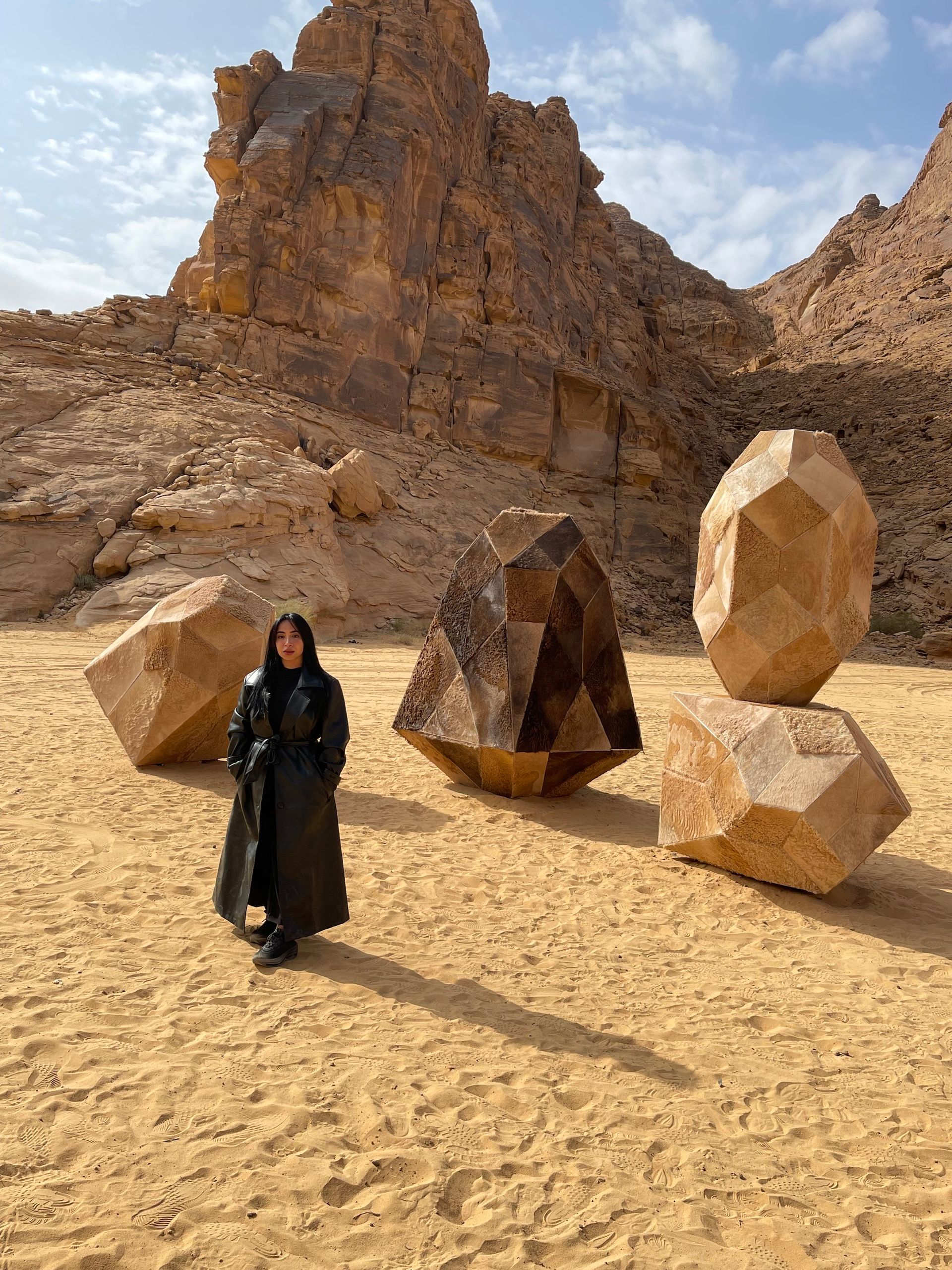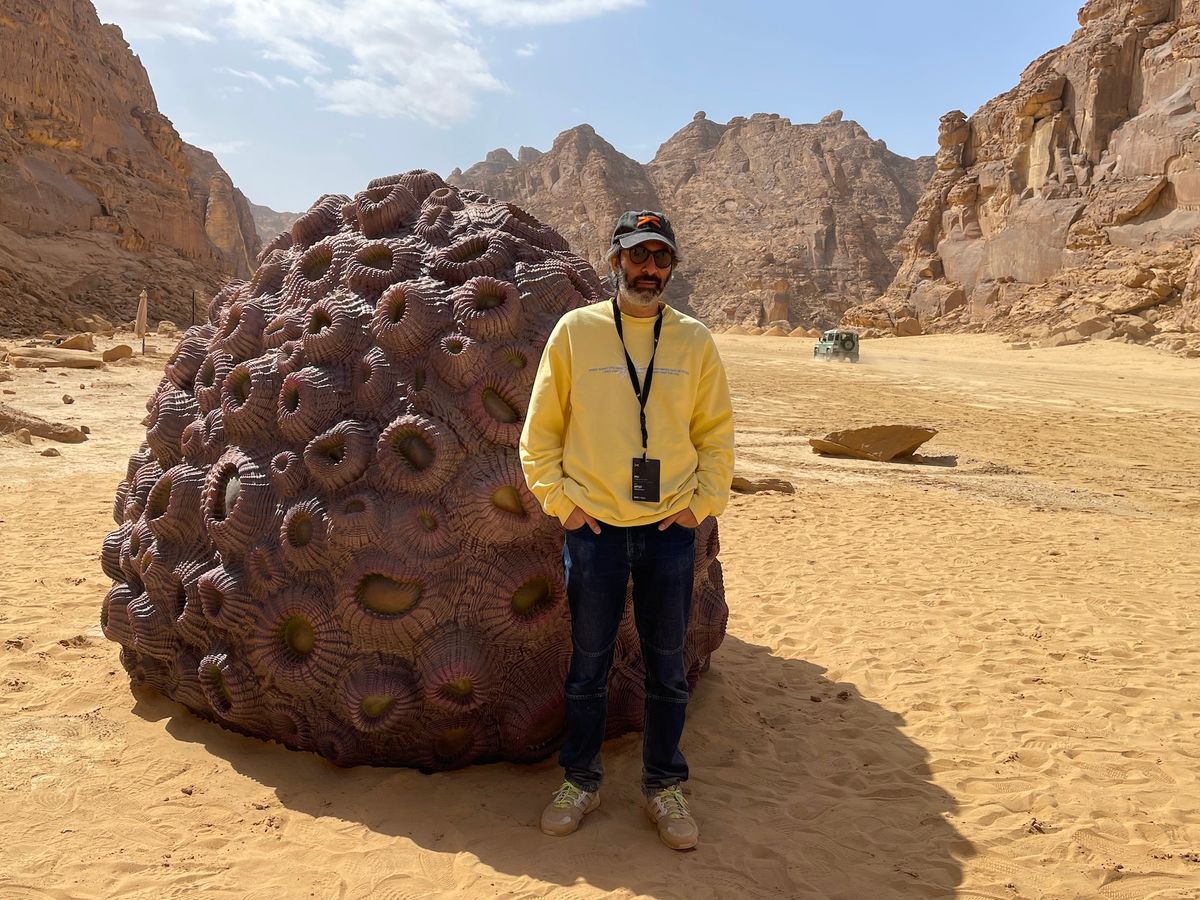The second edition of Desert X AlUla opens this week in Saudi Arabia. We asked four artists how and why they created works for this challenging environment, which has been millions of years in the making.
Shezad Dawood
Coral Alchemy (2022)
The canyon where this edition of Desert X AlUla is sited would have been the delta of what is now the Red Sea approximately 10 million to 12 million years ago. You can actually find shells in the sandstone if you look around, and of course the sandstone itself has been etched over those millions of years, and even longer, by the sea, hence the deep time life cycle between seas and deserts.
The two coral species I used [to make the works] were identified in collaboration with Marine Biologists working in Saudi, as ones endemic to the Red Sea, and facing stress impacts. The decline of coral reef systems, reduces their ability to act as a barrier to extreme weather events such as tsunamis, leaving coastal and island nations at increasing risk of loss of life and property damage, so they are as vital to us as they are to other species.
The works change colour to mimic the impact of rising temperatures on coral, transforming from carbon black in the morning and at night through their natural colour range, bleaching fully in the midday sun.

Dana Awartani with her work Where the Dwellers Lay (2022) Courtesy Desert X AlUla
Dana Awartani
Where the Dwellers Lay (2022)
I was really inspired by the Nabatean tombs, and how some were used as meeting halls. The design of my work is inspired by the design of the tombs which have a stairway design, showing a stairway to heaven. I loved the geometry of it; the whole pattern is generated from that. There are consecutive rings made out of the stepwell design that create this concave pattern. I remember the first time I came to AlUla for the last Desert X and it was really hot trekking from one work to another, so I wanted a piece that was interactive and functional that you could rest in. The stone cools you.
Crucially, I wanted to do something that completely respects the environment. I did not want to make something that would fight against the environment but instead looked like it belonged. From a distance, I wanted it to look like a pixelated rock face. The location is also important; it is raised on a bed and when you sit inside, you see the whole view of the canyon. Working here was amazing because it’s been so peaceful. My piece gets sun from 11 until three or four o’clock, then the back of it changes completely as the sun sets.

Zeinab Alashemi with her work Camouflage 2.0 (2022) Gareth Harris
Zeinab Alhashemi
Camouflage 2.0 (2022)
My piece is a continuation of a series of works I’ve been working on since 2015. I enjoy doing interventions that have a specific story. I work with camel hides, introducing the idea of commodity, the history of the camels, and the culture of the camel breeders into the contemporary art scene. When I came here [to the Desert X site], I saw the trace of camels around and also hope that camels will enter the show.
I like to play with the concept of man made versus nature—the camel hides here are still a natural material enveloping the steel structures. The evolution of the sculptures [consist of] the camels turning into rocks or vice versa. In the same way we are evolving in an artificial world. The work is a rock formation so it blends in with the mountains. It’s steel but has a natural skin. It speaks to all sorts of crowds and I hope local audiences will come and see it.

Stephanie Deumer in her installation Under the Same Sun (2022) Gareth Harris
Stephanie Deumer
Under the Same Sun (2022)
The work is dug like a cave into the ground. The rocks [used to create the walls] are local so it’s basically what you see outside, in the canyon. This work ended up being very beautiful because you see how it’s held together. The whole roof is made of solar panels which are pulling in power that’s being converted to power the projector and equipment; it’s also shining on the little greenhouse, helping to grow the plants, which are all native to the area and are part of research into the local environment.
I’ve done small versions of this in residencies. It’s wonderful to have the opportunity to do the whole-scale project. Carving out the space was the easy part, the difficult bit was moving the sand. It was a giant sandpit but there are incredible experts here that know how to work with sand, using water and compressing it to keep it at bay. It was meant to be ephemeral but it might become permanent (to be confirmed).


